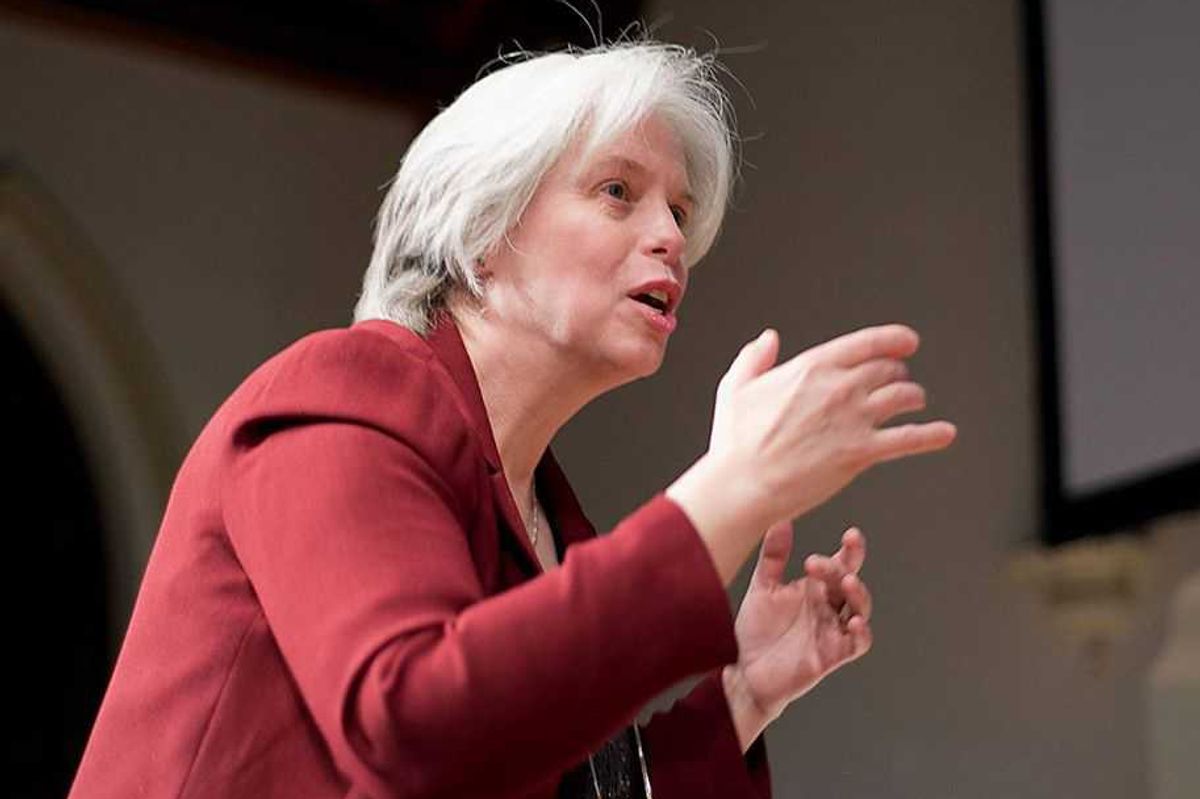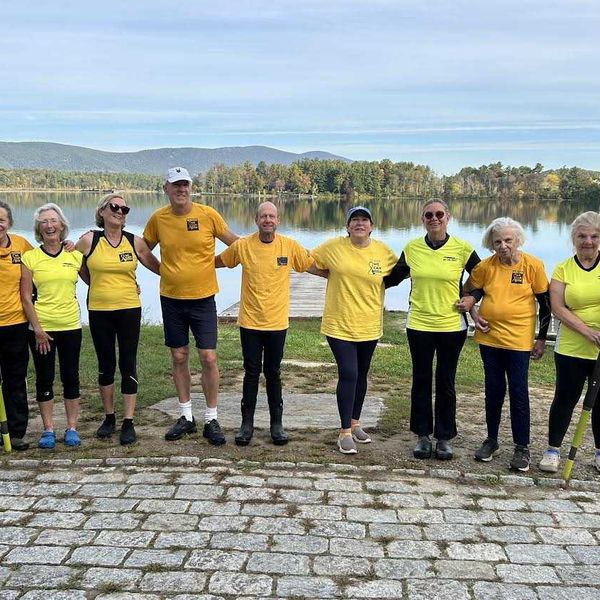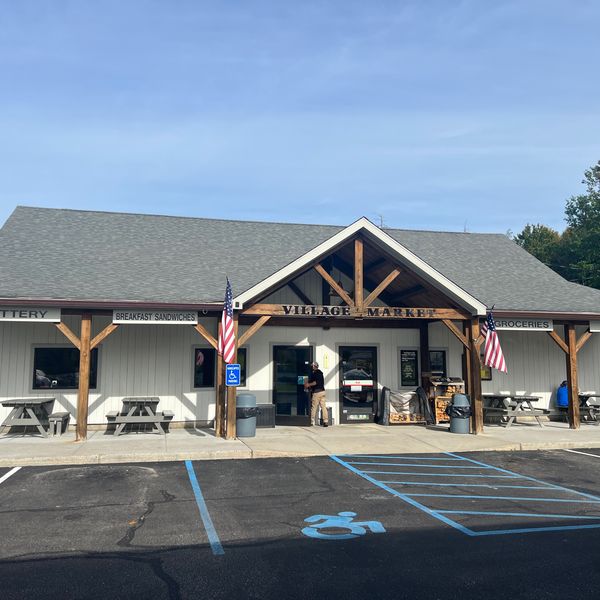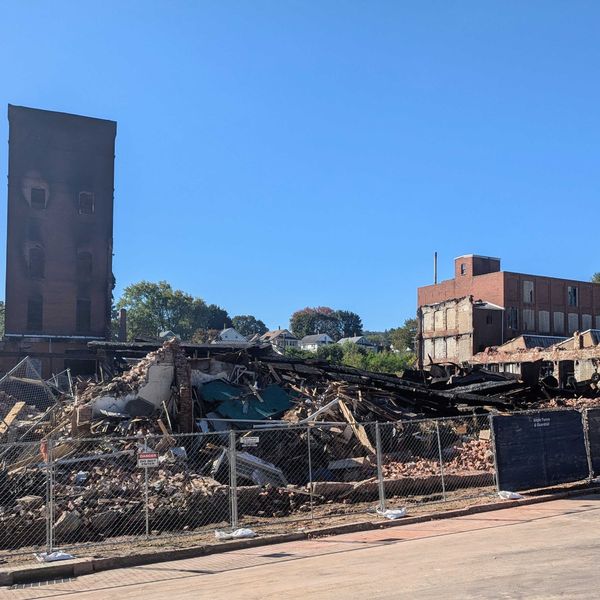Latest News
Crescendo launches 22nd season
Oct 15, 2025
Christine Gevert, artistic director of Crescendo
Steve Potter
Christine Gevert, Crescendo’s artistic director, is delighted to announce the start of this musical organization’s 22nd year of operation. The group’s first concert of the season will feature Latin American early chamber music, performed Oct. 18 and 19, on indigenous Andean instruments as well as the virginal, flute, viola and percussion. Gevert will perform at the keyboard, joined by Chilean musicians Gonzalo Cortes and Carlos Boltes on wind and stringed instruments.
This concert, the first in a series of nine, will be held on Oct. 18 at Saint James Place in Great Barrington, and Oct. 19 at Trinity Church in Lakeville.
For those unfamiliar with Crescendo, the award-winning organization was founded in 2003 and brings lesser-known works from the Renaissance and Baroque periods — along with contemporary fusion pieces — to new life. Its performances often blend classical composition with nontraditional instrumentation for a refreshing new take on an established body of work.
Gevert, who is German, Chilean and American, is a conductor, keyboardist and musical scholar. As the multi-national, multi-lingual (German, Spanish and English) creative director, she is a veritable whirlwind of talent, professionalism and inspiration who conceives of new musical treats for her audiences. She also hires and nourishes local talent, sources internationally known vocal and instrumental professionals, and provides her audiences with well-researched program notes for each concert, packaged in lush, full-color programs that resemble illuminated manuscripts.
“It is the excitement about and dedication to the music, along with the prerequisite vocal and instrumental talent, that characterizes a Crescendo member,” said Gevert. “I don’t care about things like how old or young you are or where you’re from — it’s all about bringing these performers together to provide unforgettable musical experiences for its audiences.”
“Traditional audiences for classical music performances tend to skew older,” Gevert continued. “For that reason, I’ve embarked on an effort to reach younger listeners, and have done things like taken a Crescendo choral group to perform at Housatonic Regional High School. I’ve also launched an effort to recruit and train young singers in Baroque singing techniques so they can perform with our existing choral group.”
The upcoming 2025-26 season includes, among other performances, a solo recital and benefit concert on Nov. 22 by the international Baroque opera star and countertenor Nicholas Tamagna. The curated program will include works by Handel, Vivaldi, and Monteverdi.
Two dazzling Christmas concerts follow: on Dec. 6 and 7, Crescendo presents J.S. Bach’s “Sweet Comfort” cantata and Mass in G minor, featuring the full chorus and soloists with a period instrument orchestra. On Dec. 21, the annual Holiday Concert will be presented: “A Tapestry of Traditions: Unraveling the History of Christmas Carols,” with the entire Crescendo vocal ensemble and Gevert on organ.
For the full schedule, concerts details and ticket information, visit: www.crescendomusic.org
Keep ReadingShow less
Robin Crofut-Brittingham in her studio.
Provided
Robin Crofut-Brittingham, a native of East Canaan, is an established artist living in Montreal. Her new book, “TheIlluminated Book of Birds” will be published Oct. 21 by Timber Press, and there is an accompanying art show at Berkshire Botanical Garden in Stockbridge, “Flock: Watercolor Paintings by Robin Crofut- Brittingham,” on view from Oct. 18 through Nov. 30.
The paintings in the book look as if they are from a 19th century book. In a phone interview with Crofut-Brittingham, the artist said the traditional look is intentional.
“I’m always combing over antique natural history books.”
In her travels around the world (including France and Russia), she has made a point of observing the local birds.
She describes herself as “an amateur naturalist.”
Now working as a full-time artist, and “selling enough to make it work,” it occurred to her that while regional bird guides are fine for their purpose, she could do something special with watercolor renditions of birds she has seen.
Hence the new book.

Crofut-Brittingham grew up in the East Canaan section of North Canaan, the daughter of artist Erica Crofut and the late Peter Brittingham.
There is a public opening reception on Friday, Oct. 24, from 4 to 6 p.m. at Berkshire Botanical Garden, and a special artist tour of the exhibition from 2 to 3 p.m on Saturday, Nov. 29.
Keep ReadingShow less
A room that felt breezy in July can seem stark in October. Adding layers — pillows, rugs, curtains — grounds a space.
Kerri-Lee Mayland
They are hard to miss — eye-popping mansions so large it takes a few seconds just to drive by as your eyes try to take it all in. Commanding? Absolutely. But the measure of a home’s success isn’t square footage. It’s the feeling a space creates.
I was reminded of that during a visit to a friend’s home in Ottawa last fall. He and his wife invited us over for what turned out to be one of the most memorable evenings of the season.
Their house sits on a tree-lined street not far from the downtown center — the kind of neighborhood perfect for trick-or-treating, where you could collect a good haul of candy in a short time. There’s no room for sprawling country estates here. These city homes balance history and charm while offering something even more meaningful: warmth.
Nelson is a self-taught pizza connoisseur. We arrived to his station of homemade dough and countless topping combinations he picked up earlier that day from a nearby Italian market. His setup included a large brick oven that glowed near a red-and-white checkered tablecloth, with soft Italian music playing. The table was set beneath string lights, and the night air carried that unmistakable mix of woodsmoke and autumn chill. Neighbors drifted by — one stopped after work for a slice — and before long, Nelson and Deanna’s little backyard felt like a scene from a storybook.
At one point, Nelson said, “You’ve seen my home…it’s not huge.” I cut him off immediately. “It doesn’t matter,” I said. “It’s how a home feels — and yours is off the charts with warmth!” That night crystallized a truth I carry into my work with clients here in Litchfield County, and specifically in Lakeville, where most homes are intentionally not McMansions. Instead, they are charming cottages and rambling older homes — smaller in size but bursting with character, history and heart.
I recently worked with a family in Canaan who wrestled with this very issue. Their home brimmed with treasures from abroad — textiles, pottery, artwork and sentimental mementos too precious to discard. Each piece told a story, but together they overwhelmed the eye. By editing and layering, we allowed their favorites to shine while storing others for later rotation. The result was a home that breathed. When they hosted friends, guests noticed not the size of the house, but the warmth of its atmosphere.
Creating that kind of feeling doesn’t require an interior designer — or a big budget, to be honest. It often comes down to intention. A well-placed lamp that softens the evening light. A textured throw across a sofa. A dining table, however small, always ready to fit one more chair. These touches whisper “welcome” in ways oversized square footage never can.
Fall is the perfect season to reassess. A room that felt breezy in July can seem stark in October. Adding layers — pillows, rugs, curtains — grounds a space. But restraint is just as important. Too many seasonal touches, and a home tips into clutter. Too few, and it feels unfinished. Somewhere in the middle lies the sweet spot, where comfort and style meet.
I often suggest what I call the “guest test.” Imagine a friend stopping by on a chilly evening. Would they feel comfortable settling in with a cup of tea or a glass of wine? If the answer is yes, you’ve likely found the balance.
Homes don’t need to impress physically. They need to express emotionally. Guests won’t remember if your bookshelf was perfectly styled, but they will remember how your home made them feel — cozy, cared for and welcome. That’s the magic.
My Ottawa friend’s city house proved it best. Under twinkling lights, with dough stretched by hand and endless laughter in the night air, it wasn’t about size at all. It was about warmth, generosity and connection — the true heart of every home. In Lakeville, that same spirit shines through smaller cottages and rambling homes, where charm, character and care create spaces people love to linger in.
Because in the end, a home isn’t measured in square feet, but in the memories it holds.
Kerri-Lee Mayland is an Emmy award-winning news anchor and designer. She lives in Lakeville.
Keep ReadingShow less
loading








